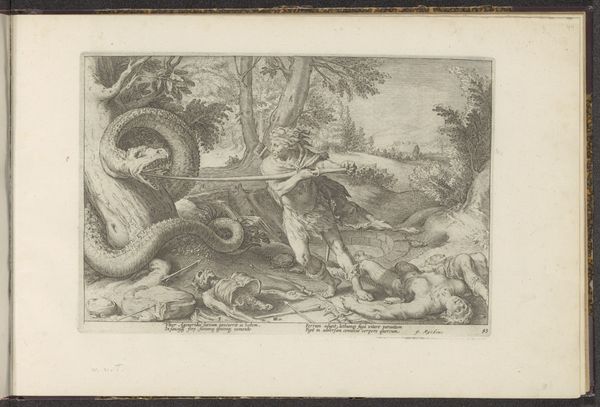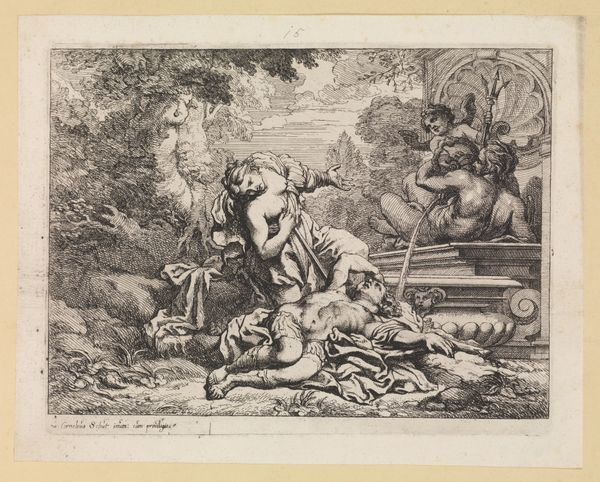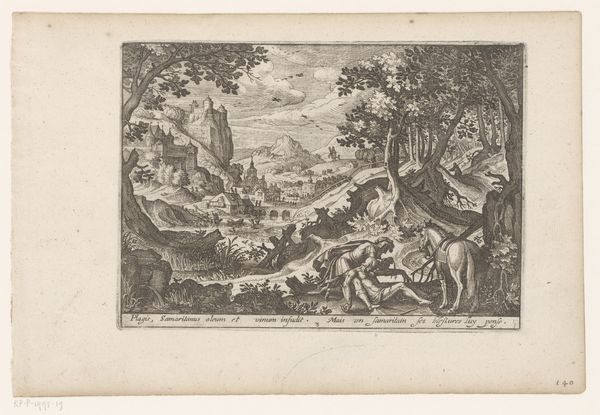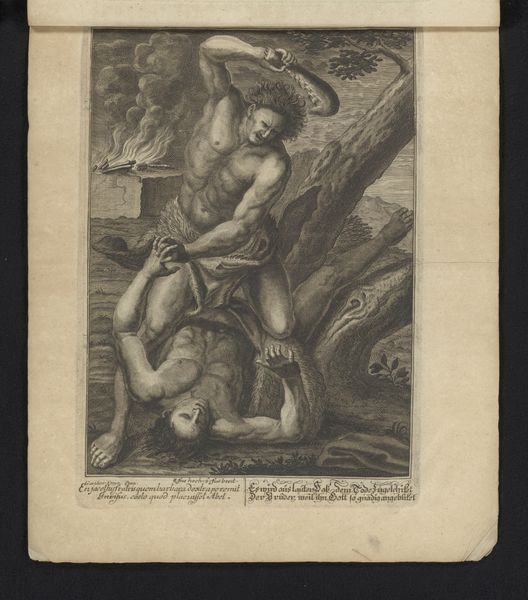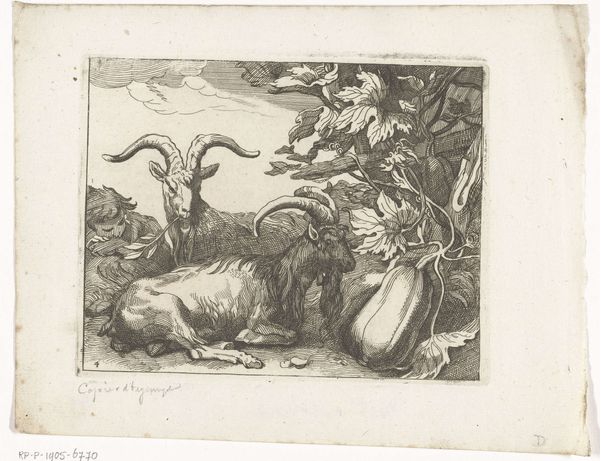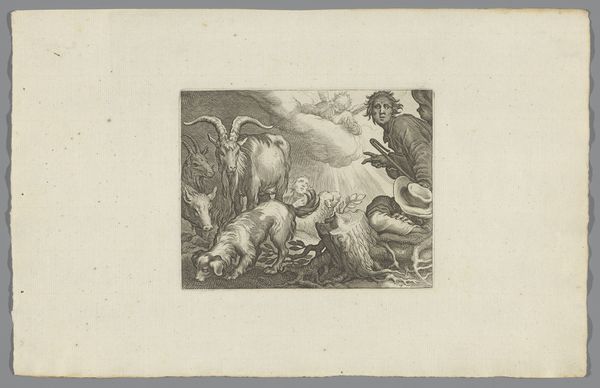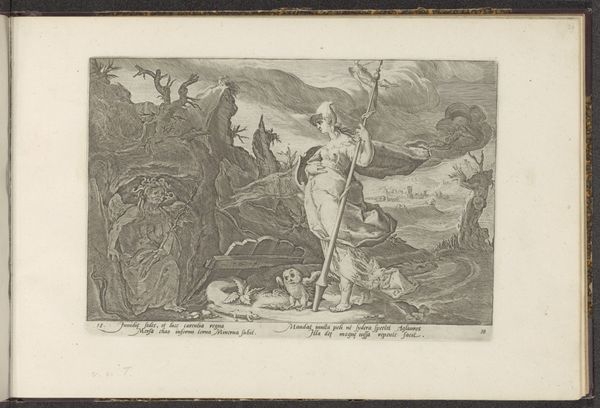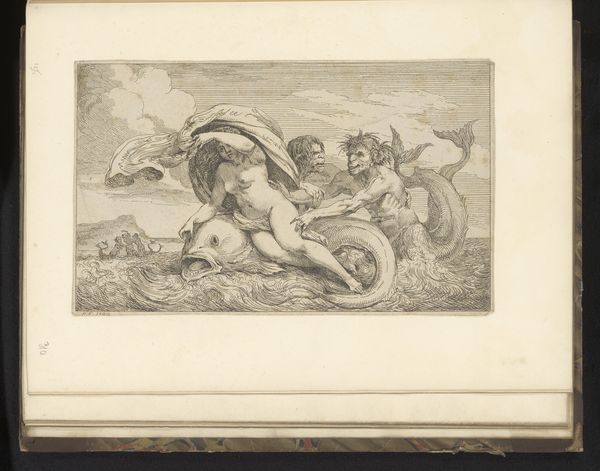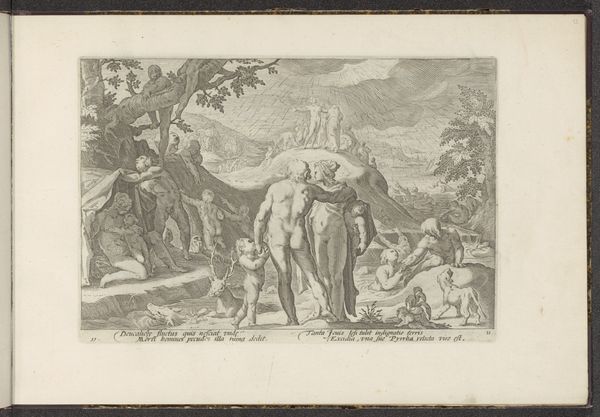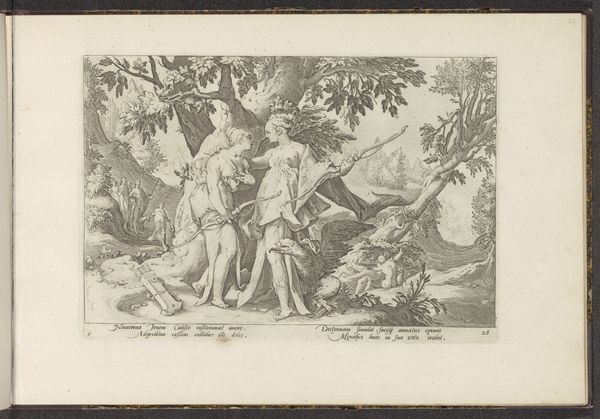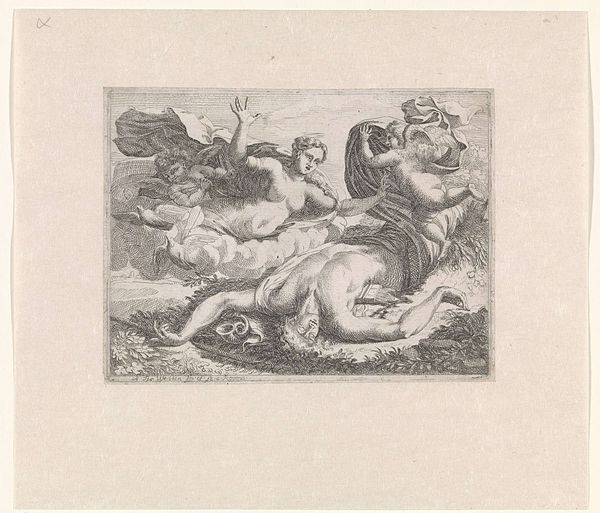
Dimensions: height 174 mm, width 254 mm
Copyright: Rijks Museum: Open Domain
Editor: This is Hendrick Goltzius' engraving, "Companions of Cadmus Devoured by a Dragon," dating from around 1590 to 1728. The scene is, well, pretty gruesome! A huge serpent is attacking Cadmus' companions. What do you make of the relationship between the narrative and the artistic style here? Curator: Goltzius, working in the Mannerist style, uses this dramatic scene to explore themes of power, vulnerability, and the precariousness of life. The hyper-muscular figures contrast sharply with the creature's raw, primal power, reflecting societal anxieties about unchecked authority and the colonial project, in which individuals were often sacrificed. Editor: Colonial project? That's not immediately obvious to me. Curator: Think about the context. This story, pulled from Ovid's *Metamorphoses*, speaks to exploration, conquest, and the dangers inherent in venturing into new territories. Cadmus is searching for his sister, Europa, isn’t he? This narrative, popular at the time, might have been interpreted as an allegory for European expansion, a warning of sorts about the potential violence unleashed when "civilization" encounters the "untamed." How do you see gender operating in this context? Editor: That's a great question. All the figures are male, which seems relevant. Perhaps it emphasizes the inherent risks associated with male ambition and the erasure of female experiences during that period? Curator: Exactly! And consider the dragon itself, a monstrous feminine figure guarding its territory. Its defeat ultimately leads to the founding of Thebes, a "civilized" city, so we can understand this myth as a patriarchal narrative where dominance over the feminine is essential for creating an ordered society. What have you learned while studying this piece? Editor: I’m fascinated by the many layers here, how a mythological scene can be seen through lenses of colonialism, gender, and power. Thank you for revealing these connections. Curator: Indeed. By considering the historical and social context, we move beyond a simple story of heroism and monster slaying to uncover more nuanced critiques of society, authority, and the human cost of progress.
Comments
No comments
Be the first to comment and join the conversation on the ultimate creative platform.
